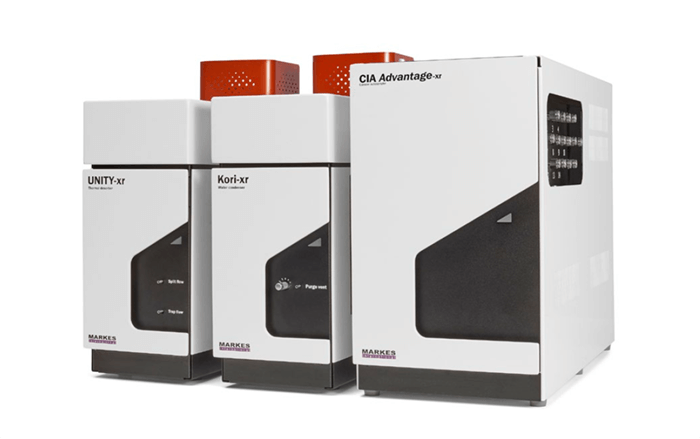Summary
This study describes the sampling and analysis of a combined list of PAMS ozone precursors, TO-15 air toxics and OVOCs at high humidity, without the use of liquid nitrogen or other cryogen. The method described complies with the detection limit and data-quality requirements of Chinese EPA Method HJ 759 and the Chinese Environmental Air Volatile Organic Compound Monitoring Program. The use of Markes’ groundbreaking Dry-Focus3 preconcentration and watermanagement technology results in excellent chromatographic peak shape at 100% humidity, while maintaining sample-tosample cycle times below 60 minutes. The use of robust, field-proven dual-column/Deans switch technology in the GC oven allows FID analysis of highly volatile C2 and C3 hydrocarbons, with the remainder detected using a singlequadrupole mass spectrometer.
Introduction
The Chinese Ministry of Environmental Protection has issued a document relating to the Environmental Air Volatile Organic Compound Monitoring Program (December 2017).1 This document, hereinafter abbreviated ‘EA-VOC-MP’ for convenience, requires the monitoring of 117 compounds comprising three main categories of hazardous airborne volatile pollutants:
- Ozone precursors: These are listed under the US EPA Photochemical Assessment Monitoring Scheme (PAMS), and are monitored using either on-line techniques (for continuous monitoring) or remote canister sampling. Both techniques require water removal and preconcentration of the sample before injection into a GC, usually in a dualcolumn/ Deans switch configuration with dual flame ionisation detection (FID) (for an example, see Application Note 129).






